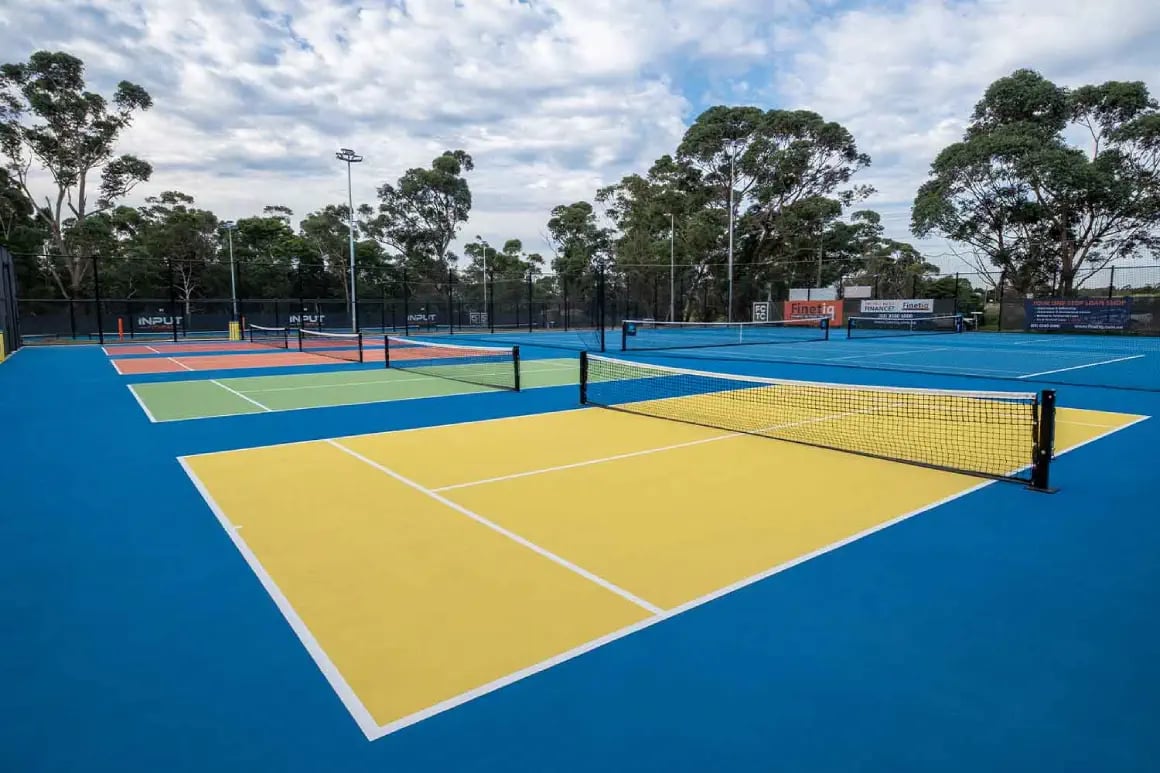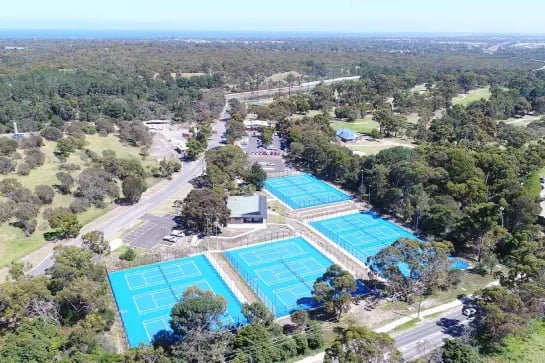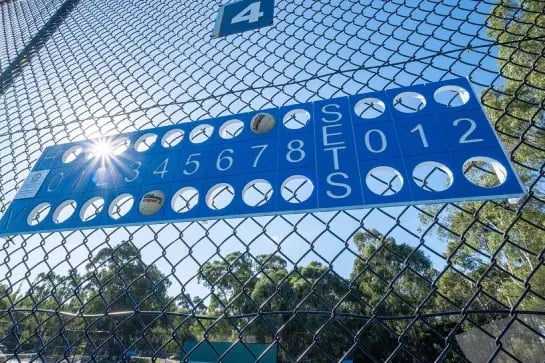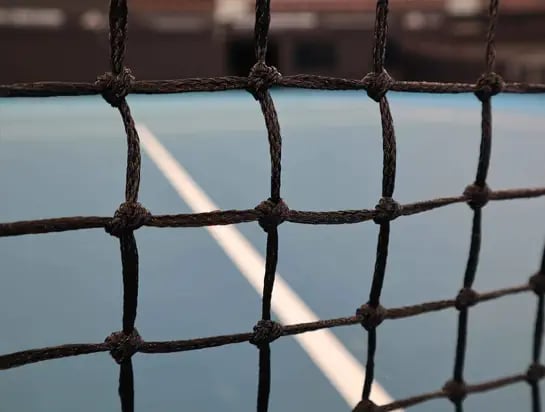SPORTENG specialises in the planning, design and construction phase consulting services of Fields of Play across all sports in Australia. Our experienced team all contribute towards designing high-quality Fields of Play for all levels of use.
Tennis courts need to complement the precise nature of the game. The margin of error for a ball being in or out is so small, meaning that the court dimensions and line markings must be precise.

The International Tennis Federation (ITF) mandates the court dimensions, regardless of the level of competition. Tennis Australia (TA) provides further direction on the extent of run-off for the courts, which depends on the level of competition proposed for the facility.
Whether it’s a new facility of an older facility no longer ITF compliant, our team are well-versed with designing tennis courts.
Our technical expertise underpins all our projects, and we are regularly called upon to work on projects of high significance.
No matter if you’re a governing body or a local school, you will benefit from a sports field that puts the athlete first.
We guarantee that SPORTENG’s designs will meet your needs, while complying with ITF and Tennis Australia standards.
SPORTENG projects run on time and on budget due to our team’s comprehensive 3D design work, exceptional engineering expertise, agronomic and irrigation consultation, along with clear on-site direction.
SPORTENG lives and breathes Fields of Play. We take our love of the game from the grandstand right into our office. We’re proud to be Australia’s leading Field of Play design consultancy.

.webp?width=545&height=363&name=Tennis_Requirements%20(1).webp)
Our attention to detail is reflected in our mantra, ‘measure twice, cut once’.
We’re dedicated to achieving the best results for your venue and its athletes, whether it’s a local legend or the next international star.
One of the most common failures in a tennis court is the pavement, which can lead to cracking, heaving or uneven settlement if it’s poorly designed. The design of a tennis court starts with the subgrade. We conduct a geotechnical investigation to verify the conditions of the site. This helps us identify any constraints it may have on the overlying pavement, which allows us to address the subgrade condition and design the pavement accordingly.
How the court’s associated elements, such as its perimeter drainage and fencing, are integrated into the pavement can impact the long-term performance of the pavement. We consider these elements in our holistic design approach, and effectively incorporate it into the pavement design.
We will optimise every aspect of your facility by adequately using the inherent engineering properties of all surfaces and building materials.
%20(1).webp?width=545&height=412&name=Tennis_Sustainability_2%20(1)%20(1).webp)
Here at SPORTENG, we take a sustainable approach to all our designs. Not happy with just the status quo, we always strive to investigate new designs and construction techniques that deliver positive environmental outcomes.
We believe sustainability is intertwined with sports greatness.
As part of this, we integrate your requirements, from budget to performance values, through to sustainability practices – this ensures we achieve a successful result.
Our sustainability approach for old tennis courts is to investigate the retention of the existing pavement material and re-use it as a subbase for the construction of the new court. This helps reduce project costs, tighten the construction works program, minimises carbon footprint and waste disposal.
The SPORTENG team considers the whole-of-life cycle at every stage of design and construction. We make sure that a sustainable end-product starts at the beginning of design.
.webp?width=545&height=363&name=Tennis_SurfaceOptions%20(1).webp)
There are different playing surfaces available for tennis court construction. When you select the appropriate playing surface, it should meet the needs of the end users and influence pavement formation. The surface options include:
%20(1).webp?width=545&height=727&name=Tennis_Engineering%20(1)%20(1).webp)
While we construct natural grass and red porous courts on free-draining base pavements, we install acrylic hard courts and SFAG courts over rigid or flexible pavement. Each option has its advantages and disadvantages:
The pavement has a strong relationship with the proposed tennis surface. We will help you select the appropriate pavement for your tennis facility based on your nominated surface type.
There are different fencing configurations that you can consider for a tennis court, which will depend on a few factors. Truncated fencing can be used along the sides of the courts to improve sightlines and reduce the extent of high fencing throughout the facility.


Like most external Fields of Play, tennis courts require a grade across the surface to support surface drainage. The gradient of the tennis surface cannot exceed 1% in any direction, but it can be flatter for porous surfaces.
Tennis courts should have a single-graded surface. ITF and Tennis Australia prefer a diagonal surface grade. But sometimes, an alternative surface shape may be more appropriate.
SPORTENG ‘s engineers will ensure that the required surface shape is compliant with ITF and Tennis Australia, while best suiting the constraints of the site.
All perimeter infrastructure, such as concrete spoon drains and fencing, must be located outside the ITF and Tennis Australia prescribed run-offs. Our designs will ensure object free run-offs are obtained.
The ITF has stringent tolerances meaning the design, and subsequent construction, of the facility must comply with all requirements. Through our detailed design and documentation, we will ensure your facility complies with ITF tolerance protocols.